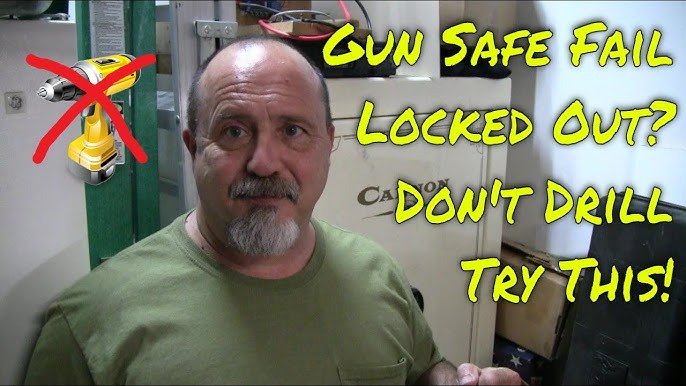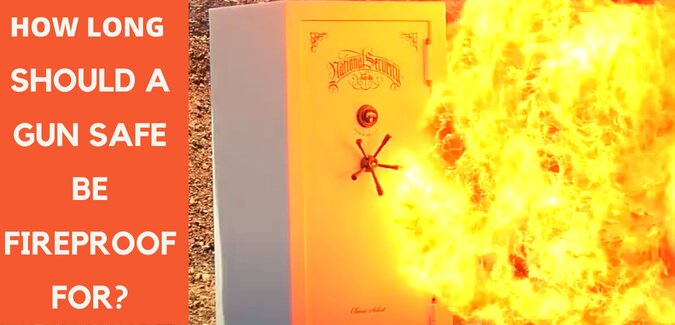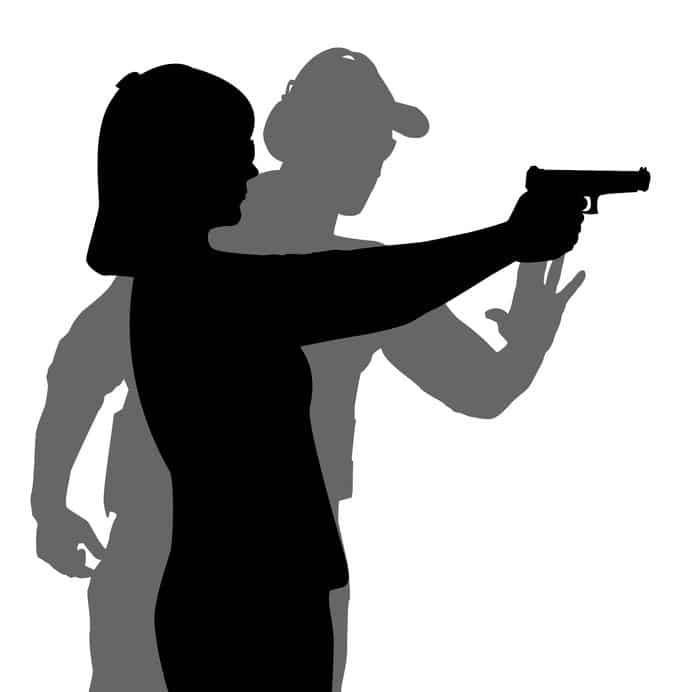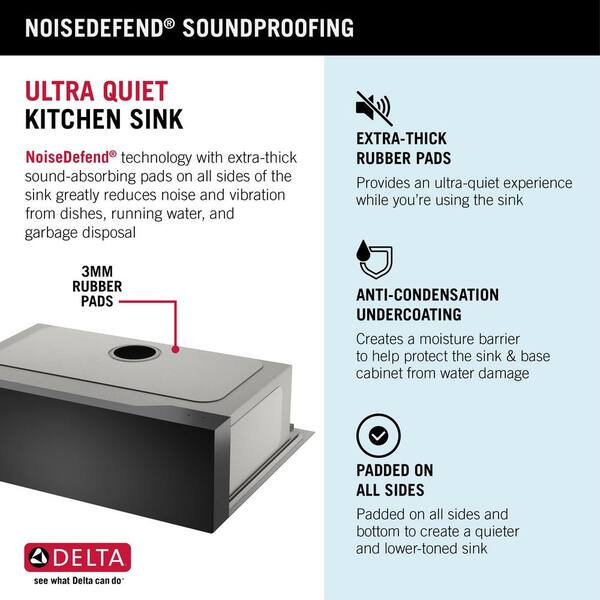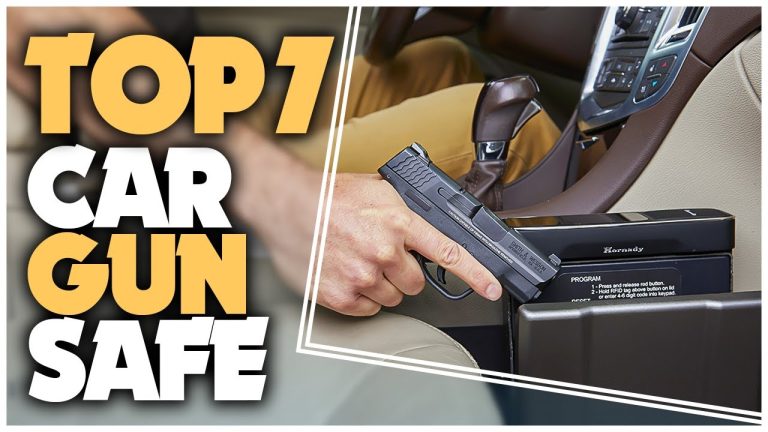How to Fix a Gun Safe Lock: Troubleshooting Tips
To fix a gun safe lock, check the batteries and ensure they’re functional. If the issue persists, contact a locksmith.
A gun safe ensures the security of firearms, protecting them from unauthorized access. Sometimes, the lock on your gun safe may malfunction, causing inconvenience and stress. Simple troubleshooting steps can resolve most issues, often without professional help. Start by inspecting the batteries, as weak or dead batteries are common culprits.
Ensure they are properly installed and functional. Regular maintenance and timely battery replacement can prevent many lock issues. If these steps don’t work, contacting a professional locksmith is advisable. They possess the expertise to handle more complex problems, ensuring your gun safe remains secure and operational.

Credit: m.youtube.com
Identifying Common Issues
Having trouble with your gun safe lock? Identifying common issues can save you time and stress. Knowing what to look for helps fix the lock quickly. Below, we discuss common mechanical and electronic lock problems.
Mechanical Problems
Mechanical locks can jam or become difficult to turn. This issue often stems from dirt or debris inside the lock. Use a small brush to clean the keyhole. Lubricate the lock with graphite powder. Avoid using oil; it can attract more dirt.
Another common problem is worn-out or broken keys. Inspect your keys for signs of wear. Replace worn keys to prevent further damage. Bent or broken keys need professional help. Do not force them into the lock.
| Problem | Solution |
|---|---|
| Dirty lock | Clean with a small brush |
| Worn keys | Replace keys |
| Broken keys | Seek professional help |
Electronic Lock Failures
Electronic locks face issues like dead batteries or faulty wiring. Always check the batteries first. Replace them if they are dead. Use the correct type of battery for your lock model.
If the lock still fails, inspect the wiring. Look for loose or damaged wires. Tighten any loose connections. Replace damaged wires carefully. Consult the manual for specific instructions on wiring.
- Dead batteries: Replace with correct type
- Loose wires: Tighten connections
- Damaged wires: Replace carefully
Sometimes, the keypad may malfunction. Dirt can cause this issue. Clean the keypad with a soft cloth. Avoid using water. If cleaning does not work, the keypad may need replacement.
- Inspect the keypad
- Clean with a soft cloth
- Replace if necessary
Electronic locks also have reset options. Refer to the manual to reset your lock. This can solve many minor issues. Always keep your manual handy for troubleshooting tips.
Gathering Necessary Tools
Fixing a gun safe lock requires the right tools. Gathering the necessary tools ensures a smooth repair process. This section will cover the essential tools you’ll need.
Basic Tool Kit
Your basic tool kit should include:
- Screwdrivers – Both flathead and Phillips head.
- Pliers – Needle-nose and standard.
- Allen wrenches – Various sizes.
- Hammer – A small, sturdy one.
- Flashlight – To see inside the lock.
These tools will help with most minor repairs.
Specialized Tools
Sometimes you need specialized tools:
- Lock pick set – For more advanced fixes.
- Drill – With various drill bits.
- Borescope – To inspect the lock’s interior.
- Lubricant – To ease sticky mechanisms.
Ensure you have these specialized tools on hand. They are crucial for complex repairs.
Having the right tools makes fixing your gun safe lock easier. Prepare your tool kit before starting the repair.
Assessing The Lock Type
Understanding the type of lock on your gun safe is crucial. It helps in determining the correct approach to fix it. Gun safes typically come with either mechanical or electronic locks. Let’s dive into the details of these lock types.
Mechanical Vs. Electronic
Mechanical locks are traditional and do not require batteries. They are known for their durability and reliability. These locks usually involve a dial that you turn to enter the correct combination.
Electronic locks are modern and use a keypad for code entry. They offer quick access and are easy to use. These locks need batteries to function and may have additional features such as keypads with backlight.
| Mechanical Locks | Electronic Locks |
|---|---|
| Durable and reliable | Quick access |
| No batteries required | Requires batteries |
| Involves dial turning | Uses keypad |
Keypad Vs. Dial
Gun safes with keypad locks allow you to enter a code using buttons. These locks provide fast access and are user-friendly. Keypad locks can sometimes malfunction if the battery dies or the buttons wear out.
Gun safes with dial locks require you to rotate a dial to the correct numbers. Dial locks are very reliable and don’t depend on power. They can be trickier to use because you need to be precise with the combination.
- Keypad locks: Fast access, easy to use, requires battery.
- Dial locks: Reliable, no battery needed, requires precision.
Understanding your lock type helps in troubleshooting. It also ensures you follow the right steps to fix your gun safe lock effectively.

Credit: www.amazon.com
Resetting Electronic Locks
Resetting electronic locks on a gun safe can be simple. It ensures your safe remains secure. Following the right steps is crucial. Here’s how to reset electronic locks effectively.
Battery Replacement
Often, electronic locks fail due to low batteries. Replacing the battery is the first step.
- Locate the battery compartment. Usually, it’s behind the keypad.
- Open the compartment using a small screwdriver.
- Remove the old batteries carefully.
- Insert new, high-quality batteries. Ensure correct polarity.
- Close the compartment securely.
Using fresh batteries can resolve many lock issues.
Factory Reset
A factory reset restores the lock to its original settings. Follow these steps:
- Find the reset button. It’s often inside the battery compartment.
- Press and hold the reset button for 5-10 seconds.
- Release the button. The lock should beep or flash to signal a reset.
- Enter a new code immediately. Follow the manufacturer’s instructions.
Resetting clears any previous codes. Always set a strong, memorable code.
Fixing Mechanical Locks
Fixing mechanical locks on a gun safe requires patience and precision. Mechanical locks are durable but can malfunction over time. Understanding basic repair techniques can save you from costly professional services.
Lubrication Methods
Proper lubrication can solve many lock issues. Use a lubricant designed for locks. Avoid household oils as they can attract dust.
- Apply a small amount of lubricant to the keyhole.
- Insert the key and turn it several times.
- Wipe off any excess lubricant with a cloth.
Ensure the lubricant reaches all internal parts. This can prevent future malfunctions.
Realigning Components
Sometimes, lock components can become misaligned. This can cause the lock to jam. Realigning these components can restore functionality.
- Open the safe door and locate the lock mechanism.
- Inspect the components for any misalignment.
- Use a small tool to gently adjust the parts back into place.
Check the alignment by turning the lock several times. Repeat the adjustment if necessary.
Regular maintenance can prevent most lock issues. Always handle the lock with care.
When To Call A Professional
Fixing a gun safe lock can be a tricky task. Certain situations may require expert help. Let’s dive into when you should call a professional.
Complex Issues
Some gun safe locks have intricate designs. These locks are hard to fix without expert knowledge. Digital locks often need special tools and skills. If your lock has electronic components, it’s best to call a professional. Incorrect handling might damage the lock further.
Biometric locks also fall into this category. They use advanced technology to read fingerprints. Any attempt to fix these without proper skills may result in permanent damage. Professional locksmiths have the expertise to handle these complex issues.
Warranty Considerations
Many gun safes come with a warranty. Fixing the lock yourself might void this warranty. Always check the terms of your warranty before attempting any repairs. If your gun safe is still under warranty, calling a professional is a wise decision.
Professional service ensures that your warranty remains intact. They can provide authorized repairs that do not affect your warranty. This can save you money in the long run and ensure your safe continues to function properly.
| Issue | Professional Needed |
|---|---|
| Complex Digital Lock | Yes |
| Biometric Lock | Yes |
| Under Warranty | Yes |
In summary, call a professional for complex issues and if your safe is under warranty. This ensures your gun safe remains secure and functional.
Preventive Maintenance Tips
Keeping your gun safe lock in top condition ensures your firearms stay secure. Proper maintenance can prevent unexpected lock failures and extend the life of your safe. Below are some essential tips to help you maintain your gun safe lock.
Regular Inspections
Inspect your gun safe lock at least once a month. Check for any signs of wear and tear. Look closely at the lock mechanism and the keypad or dial. Ensure there is no dirt or debris obstructing the lock. Use a flashlight to see small parts clearly.
Feel the lock while turning or pressing it. It should move smoothly without resistance. If it feels rough or sticky, it may need cleaning or lubrication. Don’t ignore any unusual sounds or stiffness in the lock. Address these issues promptly to avoid bigger problems later.
Proper Usage
Always handle the lock with care. Avoid using excessive force when opening or closing it. Gentle handling can significantly extend the life of the lock. Teach all users to operate the lock correctly.
Avoid using the lock as a handle to open the safe door. This can strain the locking mechanism and cause damage. Use the designated handles for opening the door instead. Keep the lock area clean and free from moisture. Moisture can lead to rust and corrosion, affecting the lock’s performance.
For further details, refer to the table below:
| Maintenance Task | Frequency | Notes |
|---|---|---|
| Inspect Lock | Monthly | Check for wear, dirt, and debris |
| Clean Lock | As needed | Use a soft cloth and gentle cleaner |
| Lubricate Lock | Bi-annually | Use recommended lubricant |
Follow these simple maintenance tips to keep your gun safe lock in excellent condition.

Credit: m.youtube.com
Choosing A Reliable Gun Safe
Choosing a reliable gun safe is crucial for keeping firearms secure. A high-quality gun safe protects against theft and unauthorized access. Knowing what to look for ensures you make an informed decision.
Top Brands
Several brands are known for their reliability and durability. Here are some of the top brands:
- Liberty Safe: Known for robust construction and high security features.
- Fort Knox: Offers customizable options and top-notch security.
- Browning ProSteel: Renowned for fire protection and innovative designs.
- Winchester Safes: Combines affordability with superior security.
- Stack-On: Great for budget-conscious buyers with reliable features.
Key Features To Look For
When selecting a gun safe, consider these key features:
| Feature | Description |
|---|---|
| Locking Mechanism | Choose between electronic locks, mechanical locks, and biometric locks. |
| Fire Resistance | Look for safes with at least 30 minutes of fire protection. |
| Size and Capacity | Ensure the safe fits all firearms and allows for future purchases. |
| Construction | Thicker steel and solid construction offer better security. |
| Weight | Heavier safes are harder to steal, adding an extra layer of security. |
By considering these brands and features, you can choose a reliable gun safe that meets your needs.
Frequently Asked Questions
How Do I Reset My Gun Safe Lock?
To reset your gun safe lock, refer to the manufacturer’s manual. Most safes use a specific sequence to reset. Follow the steps carefully to avoid any issues.
Why Won’t My Gun Safe Lock Open?
If your gun safe won’t open, it could be due to dead batteries, a jammed bolt, or incorrect code entry. Check these issues first.
What Tools Are Needed To Fix A Gun Safe Lock?
Common tools needed include screwdrivers, a wrench, and possibly a replacement lock. Ensure you have the correct tools before starting the repair.
Can I Fix My Gun Safe Lock Myself?
Yes, you can fix minor issues yourself if you follow the manufacturer’s instructions. For major problems, consider hiring a professional locksmith.
Conclusion
Fixing a gun safe lock can seem daunting, but it’s manageable with the right steps. Follow the outlined tips to ensure your safe remains secure. Regular maintenance and understanding your lock mechanism are key. Stay patient and attentive, and you’ll keep your valuables protected for years to come.

